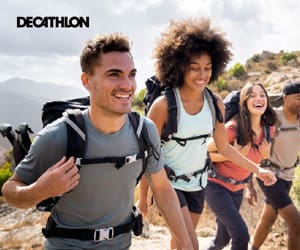Your main energy source
Food is the main energy source for both exercise and maintaining body temperature, it is important to eat often and wisely when hiking, particularly on extended or physically demanding trips. Food for hiking, and its preparation, also contributes significantly to morale, providing a pleasant social end to a physically hard day.
A day spent hiking generally expends more energy than a typical one at home. So don’t skip breakfast, eat a little more than usual and have frequent snacks of high energy, easily digestible food. On overnight hikes, have a generous serving of carbohydrates such as rice or pasta for the evening meal. Hot soup replaces lost salts and is an excellent starter to warm the tired body and the morale whilst preparing the main meal.
Popular quick acting high energy snacks include dried fruit, nuts and chocolate which, when mixed together, acquire the colourful hiking name of “scroggin”. Simple but adequate lunches include bread or biscuits and cheese, with a little fresh fruit or salad vegetable.
Evening meals are generally prepared from dehydrated ingredients because of weight considerations. However, a little fresh capsicum, snow peas or bean shoots are also light and can add a certain edibility to the dish.
Although today there is a substantial range in price and variety of commercial dehydrated food on the market, there is an increasing number of overnight bushwalkers who enjoy the challenge of producing their own creations with home food dehydrators. You would be amazed at what you can actually dehydrate for your hikes.
For short hikes, food is more of a ‘nice to have’ rather than a necessity. But, on long hikes, an adequate food supply is critical to success and safety. Download my free Hiking Meal Planner here.
Hiking food requirements
Whether you are going on a 5km walk or a 500km long-distance trek, you should always have some food along. If for no other reason than just-in-case. Having a good idea about how much food will be required to provide the energy to complete the hike is part of good planning.
Food for day hikes
A day hike requires simple, tasty, cold snacks. Pausing for a rest, munching on a handful of fruit or trail mix, and then continuing your hike is all it takes. Food that packs well and tastes good is the goal.
Food for overnight and multi-day hikes
Overnight and Multi-day hikes require much more planning and preparation than a simple day hike. Planning food needs and a diverse menu is important to ensure adequate energy is available for your body. Running out of food 30km into a 70km trek is not a good thing.
Supply options
Carrying all your food for shorter hikes makes sense, but as the distance increases the food weighs more. For long hikes, resupplying food along the way becomes a necessity. Depending on your style and discipline, there are many options for planning food along the way. Food drops may be possible if you have easy access to by vehicle along the trail. You may even be able to arrange commercial companies to organise these food drops for you. The Larapinta Trail in the NT for example, has commercial operators who can facilitate this for you. Some hikes pass through small towns where you may be able to replenish your supplies.
Cooking hiking food
Sure, you can live for days and weeks eating crackers and cheese and jerky, but at some point, you’ll be ready to kill for a hot, steaming meal. On long-distance hikes, there are quite a few options for cooking your food so you can choose which works best for your trek.
Tips for food preparation
- As with other gear, weight is important when considering which food items to pack.
- On a longer hiking trip (say three days or more), aim to pack about 700 grams – 1kg per person per day.
- A balanced hiking diet includes more fat and sugar than a normal diet.
- Buddy-up and share as much as you can – you don’t need more than one container of coffee, etc.
- Remove as much packaging as you can – re-pack in snap lock bags, they’re light and reusable. Better still, avoid buying heavily packaged items in the first place. Shop to Leave No Trace!
- Label the snap lock bags (eg Lunch day 1).
- Canned food is too heavy, bottles and glass jars are heavy and may break and you have to carry out the empties.
- Pack breakfast and dinner in one big strong stuff-bag, and lunch and snacks in another of a different colour – it makes it easier to find what you want when you need it.
- Do you really need a bowl? Can you eat from your pot? Do you really need a fork and a spoon?
- Luxuries are fine, but you’ve got to carry them – think before you pack! Some high energy and dehydrated foods, which may seem like luxuries, are actually very sensible on a walk eg sun dried tomatoes, fruit leather, chocolate. Take small quantities of highly flavoured, compact ingredients such as capers, herb and spice sprinkles, sambals and pickles, relishes and garlic, to add interest to the bland staples.
- Things that take a long time to cook or prepare can be a hassle if it’s cold, wet or late.
- Think! How much can you really eat during the time you are out there?
Planning your menu
Oatmeal for breakfast, peanut butter for lunch, and Mac-n-Cheese for dinner – now that’s a good outdoors menu. But, not five days in a row. It’s not that hard, and certainly not expensive, to create a tasty, easy, nutritious, diverse menu for any length hiking trip. Here are a few ideas. Feel free to substitute your food items.
Breakfast
- Cereals: muesli (can be cooked for porridge). Look for a good balance of taste and nutrients. Add powdered milk to cereals and mix with water later. UHT milks are an option but they weight more.
- Porridge: oats, cracked wheat, semolina, polenta plus dried fruit (soak in hot water to create juice).
- Breakfast bars – watch the sugar content.
- Pancakes – these can be a great idea but make sure you have the time to prepare and clean up.
Lunch
You can make sandwiches for the first day or pack some of the ingredients below and make them in the bush.
- Crackers: Ryvitas, Salada, sesame wheat, Vitta-wheats.
- Bread: sliced and fairly solid eg rye, pita bread, mountain bread.
- Cheese: Dutch edam/gouda keeps well. Regular cheddar cheese keeps well if removed from its plastic wrapper and is wrapped in cloth.
- Salami/biltong/jerky: choose your favourites. They will last longer if kept whole and not pre-cut.
- Sardines/tuna: sachets are now available.
- Toppings: margarine, peanut paste, jam or honey, vegemite or promite, chutney/pickles, hommus, tahini.
- Fresh fruit and/or vegies: generally for shorter trips only. Choose items that are easy to carry, such as capsicum, cucumber, carrots, celery.
Dinner
There are many prepared packet meals, either rice or noodle based, available at supermarkets. When cooked simply and quickly, they make a filling and mostly tasty dinner. Add to these any extras you like – cheese, salami, tuna, dehydrated (or fresh) vegetables etc. Most people find they can eat a whole “4 serve” packet themselves, after a good day’s walk!
Freeze-dri meals are lightweight, convenient and quick to prepare and tend to have better ingredients than the supermarket variety. Back Country Cuisine have a wide range of meat and vegetarian options including some great desserts. You simply add boiling water to the pack and it’s ready in 10 minutes. Added bonus is – no washing up!
For a gourmet experience – try the range from The Outdoor Gourmet Company. Teaming with Australian Chefs, the Outdoor Gourmet Company has designed a collection of delicious meals like Coq au Vin, Mediterranean lamb & Black Olives and Beef Bourguignon to name a few.
Dessert and snacks
- Instant pudding (packets or shake and set).
- Dried fruit and custard (try the instant custard sachets).
- Rice pudding, biscuits or chocolate.
- Trail mix: sultanas/raisins/nuts/banana chips/m&m’s/smarties, lollies etc.
- Backcountry Cuisine desserts include apple pie, cheesecake and strawberry ice-cream!
Hot drinks
Powdered milk, hot chocolate, tea, coffee, sugar, malt powder. Think about how much you will need – don’t just take a full container.
Dehydrating your own food
Many hikers enjoy the benefits of drying their own food. The food lasts longer, is far lighter and is better for you. Almost anything can be dehydrated from broccoli to lamb stew to mangos. Prepare meal-sized sachets (snap lock bags) of protein and add-in flavouring ingredients, then simply add noodles, couscous or rice on the walk.
- Protein: TVP/lentils/nuts/beans/salami/coppa or parma ham/split peas/tuna/dried duck or fish / cheese/biltong/chopped nuts-cashews, pistachios.
- Carbohydrates: rice (jasmine or basmati is good and cooks quicker than brown), pasta or noodles, dried mashed potato/rice noodles/ couscous.
- Add-ins: tomato flakes, dried onions, dried mushrooms, garlic flakes, parsley flakes, dried vegies, herbs and spices (mixed/separate). Remember salt and pepper, curry powder, stock cubes or powder (very good for quick flavour boost), flavouring base – packet sauce/casserole base etc, beef stroganoff/sweet and sour/ etc, grated parmesan cheese (for noodle dishes).
Finding food in the bush
While most plants are edible, although not necessarily nutritious, and only a small portion poisonous, you still need to be careful when choosing to eat wild foods in the bush.
A simple method of testing food before consumption is the “taste test” method. Taste Testing Food requires you to simply trial the proposed food on your body before consuming it for energy.
Leave No Trace
You pack it, you carry it. If you think you might need it, don’t take it.
Pack it in, pack it out! (ie if you don’t eat it, you must carry it back out.) Please adhere to the Leave No Trace principles and do not leave any food out there whatsoever. This includes apple cores, fruit skins, food scraps, buried or otherwise.
Never attempt to burn rubbish. Many campsites do not have a fire place – they have a year-round fire-ban. Also most sachets these days are foil or plastic lined. These either won’t burn or produce carcinogens which you and fellow hikers will then breathe in. Remember most people are out on the track to get away from pollution. Do not burn plastics or polystyrenes. Please do not try and burn tins. They won’t burn. If you bring them in then do the right thing and carry them out.
Download my free Hiking Meal Planner here.












Hayley Cafarella
Tracey O’Brien
This Article refers to a menu planner, but I can’t find the menu planner. Is there a link pls?! So glad to hear you refer to scroggin rather than the boring americanised “trail mix “ LOL
Sorry for the really delayed reply Hannah. I had taken the meal planner down but are working on a new one.